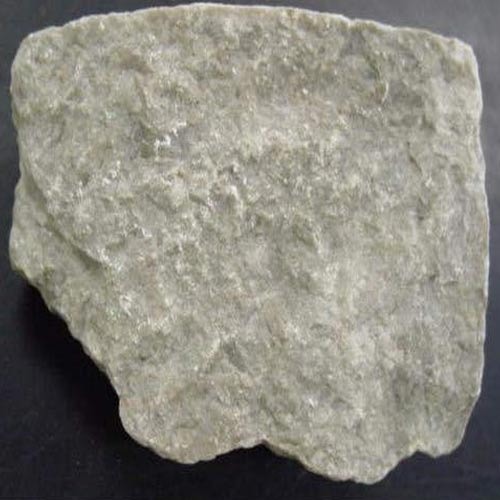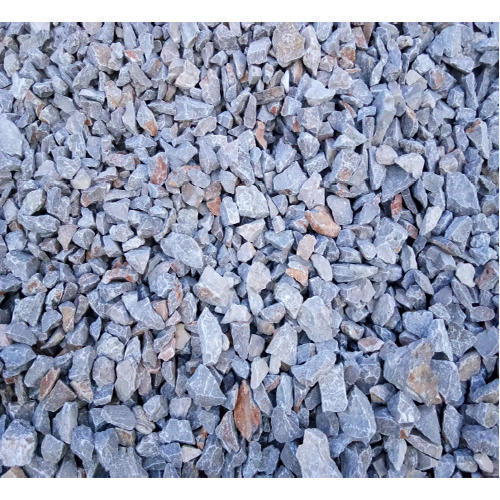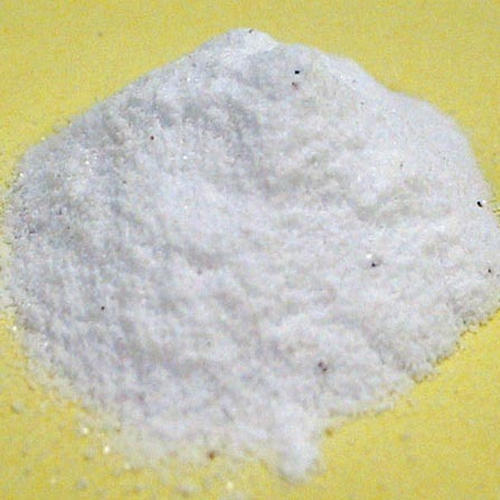- View Mobile Number
ag.nitin77@gmail.com
Natural Minerals
Leading Manufacturers, Exporters, Wholesaler and Retailer of Dolomite Lumps, Limestone Lumps and Calcite Granules from Dehradun.
| Business Type | Manufacturer, Exporter, Supplier, Retailer |
Chemically and structurally, Dolomite Powder may be regarded as calcite with half the calcium ions replaced by magnesium. Iron or manganese may substitute for magnesium in Dolomite Powder, forming isostructural series with ankerite and Kutnahorite.
The crystal structure of Dolomite Powder i.e. hexagonal-rhombohedral, is similar to that of calcite, with alternate layers of calcium ions totally replaced by magnesium. This ordered arrangement of cations slightly impairs the overall symmetry of the structure but is essential to the stability of the mineral. Hardness is 4.5-5, specific gravity 2.85, luster vitreous to pearly, color ranges from colorless to white with green, brown, or pink tints, and cleavage is perfect in three directions.
Like calcite, dolomite occurs in virtually all geologic settings: in igneous rocks as carbonatite, in metamorphic rocks as marble, and in hydrothermal deposits. Also like calcite, the most abundant occurrences are in sedimentary rocks; rock composed primarily of dolomite is sometimes referred to as dolostone.
Such rocks form vast deposits; in Italy, the Alpine range known as the Dolomites is almost entirely composed of dolomite. However, unlike calcite, dolomite's sedimentary origin is enigmatic. Although the most stable carbonate mineral where magnesium is abundant in the marine environment, it is unknown as a primary mineral. The vast, ancient deposits apparently formed from primary calcite or aragonite by diagenesis, yet this process is not observed in modern marine environments.
Dolomite is quarried for building and ornamental stone, road stone, and the production of refractory brick. It is the principal ore of magnesium metal and the source of the magnesium used by the chemical industry.
Crystal habits include saddle shaped rhombohedral twins and simple rhombs some with slightly curved faces, also prismatic, massive, granular and rock forming. Streak is white.
Calcite is far more common and effervesces easily when acid is applied to it. But this is not the case with dolomite which only weakly bubbles with acid and only when the acid is warm or the dolomite is powdered. Dolomite is also slightly harder, denser and never forms scalenohedrons (calcite's most typical habit).
Dolomite can be several different colors, but colorless and white are very common. However it is dolomite's pink color that sets another unique characteristic for dolomite. Crystals of dolomite are well known for their typical beautiful pink color, pearly luster and unusual crystal habit and it is these clusters that make very attractive specimens. Associated Minerals: include calcite, sulfide ore minerals, fluorite, barite.
Physical Characteristics :
- Formula : CaMg(CO3)2
- Uses : As an ingredient in cement and also as a mineral specimen
- Color : Color is often pink or pinkish and can be colorless, white, yellow, gray or even brown
- Hardness : 4.5-5
- Specific gravity : 2.85
| Business Type | Supplier |
| Form | Solid |
We are considered as reliable Manufacturer, Exporter and Supplier of Limestone Lumps in the market. We deal in Limestone, calcium carbonate, precipitated calcium carbonate, ground/pulverized calcium carbonate, PCC, GCC, calcite, limestone, crushed marble, ground limestone, lime, chalk, whiting, champagne chalk, French chalk, albacar, and aeromatt.
Limestone Formula : CaCo3
Limestone Description : Produced by crushing, grinding, precipitation, and classifying high purity, white, calcite limestone.
Limestone Mineralogy :
Limestone ores can be found in two of the three major types of rocks: sedimentary and metamorphic. Sedimentary rocks, as the name suggests, form from sediment or from transported fragments deposited in water. Limestone, for example, is formed from inorganic remains, such as shells and skeletons. Metamorphic rocks-such as marble, slate, quartzite-form when a rock mass is subjected to great heat and pressure. The principal element in the calcium carbonate ore is calcium (Ca). The ore may contain other elements such as Magnesium (Mg), Iron (Fe) and Manganese (Mn)- that affect whiteness, hardness and specific gravity of Limestone.
Limestone Typical Chemical Properties Available :
- Purities available from 50% to 99.9%
- Pharmaceutical (USP) grade
- Food (FCC) grade
- Electronic grade
- Optical grade
Typical Physical Properties Available :
- Sintered pieces
- Targets
- Coarse granules
- Various grades of ground/pulverized CaCo3 and precipitated CaCo3
- Precipitated CaCo3 powder granulations are available down to nanoparticles as fine as 30 nanometers
We deal in :
Calcium carbonate, precipitated calcium carbonate, ground/pulverized calcium carbonate, CaCO3, PCC, GCC, pharmaceutical, USP, food, FCC, optical, electronic, nano powder, calcite, limestone, crushed marble, ground limestone, lime, chalk, whiting, champagne chalk, French chalklime, albacar and aeromatt.
Limestone Typical Applications :
- Plastics, rubber, coatings, inks, adhesives, and soil conditioner, building products, plastic filler, ceramic flux, asphalt filler, chemical processing, glass ingredient, water treatment, pesticide granules, dusting agent, welding rods coating, thermosets, thermoplastics, paints, coatings, adhesives, sealants, rubber, pharmaceutical, toothpaste, and food additive.
- Limestone has a wealth of uses: as a flux in steel production and in processing of non-ferrous metals; in bricks, mortar and concrete for construction; as a raw material in glass; in the construction of roads and dams; in the manufacture of paper, paints and dyes, carpeting and other floor coverings; and in the treatment of water, industrial waste, gases and household refuse. It is also used to reduce soil acidity in agriculture, to absorb water and add calcium in food products, and in sugar extraction.
- Limestone is a versatile additive for use in a wide range of plastic and elastomeric applications. Its regular and controlled crystalline shape and ultrafine particle size together with the hydrophobic surface coating, combine to the benefit of both polymer processing and subsequent physical properties.
Packaging : 50 Kg bags, poly-lined fiber drums, 1MT bulk bags and loose bulk.
| Business Type | Manufacturer, Exporter, Supplier, Retailer |
| Packaging Details | As required. Various sizes starting from 100 mesh to 6mm |
Our Calcite Granules are in great demand in the industry. Calcite Granules, offered by us, are available in various sizes ranging from 8 mesh up to 4 mm. Depending upon their sizes, Calcite Granules are used in de salination of sea water, water treatment plants, solar glass, poultry feed etc.
Packing : Usually in PP/HDPE or as per requirement.
Applications :
- Poultry Feed
- Solar Glass Manufacturing
- Steel Processing
- Raw material for Calcium carbonate and quick lime



